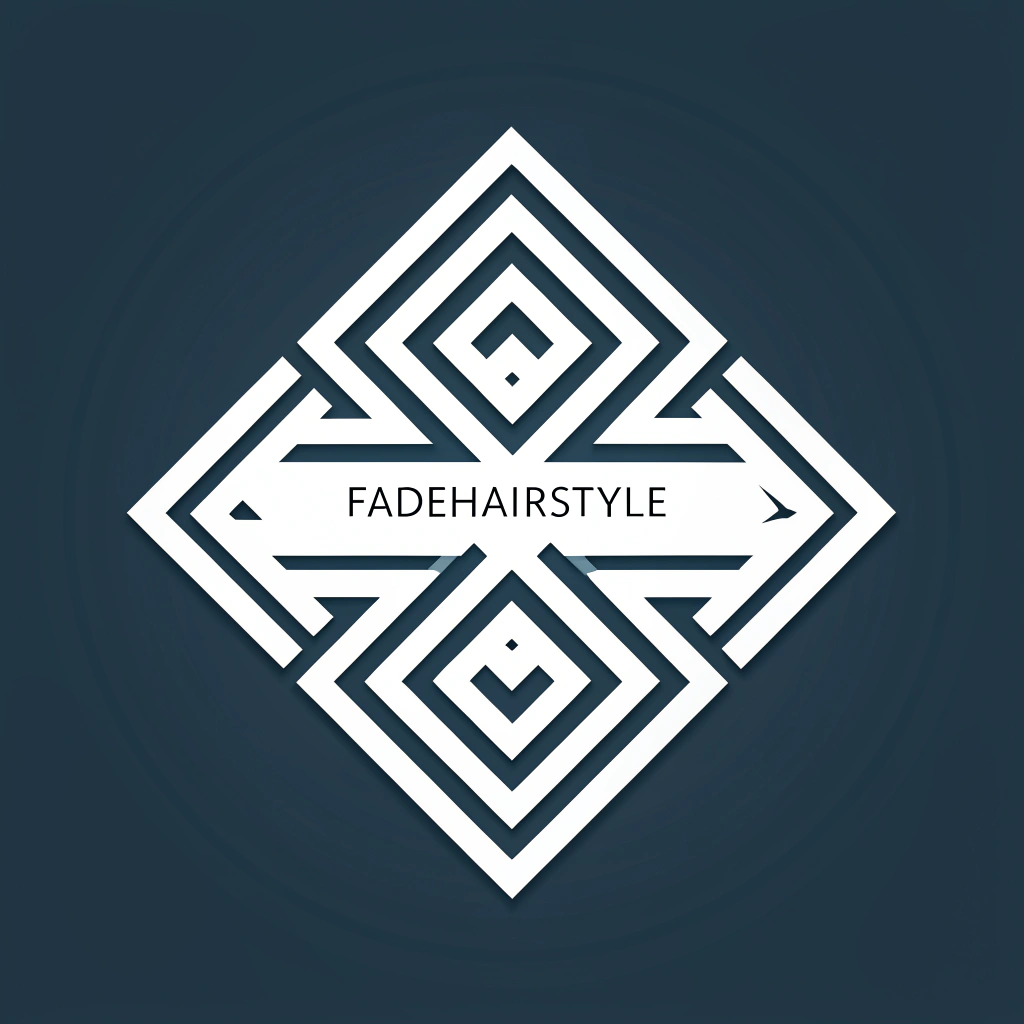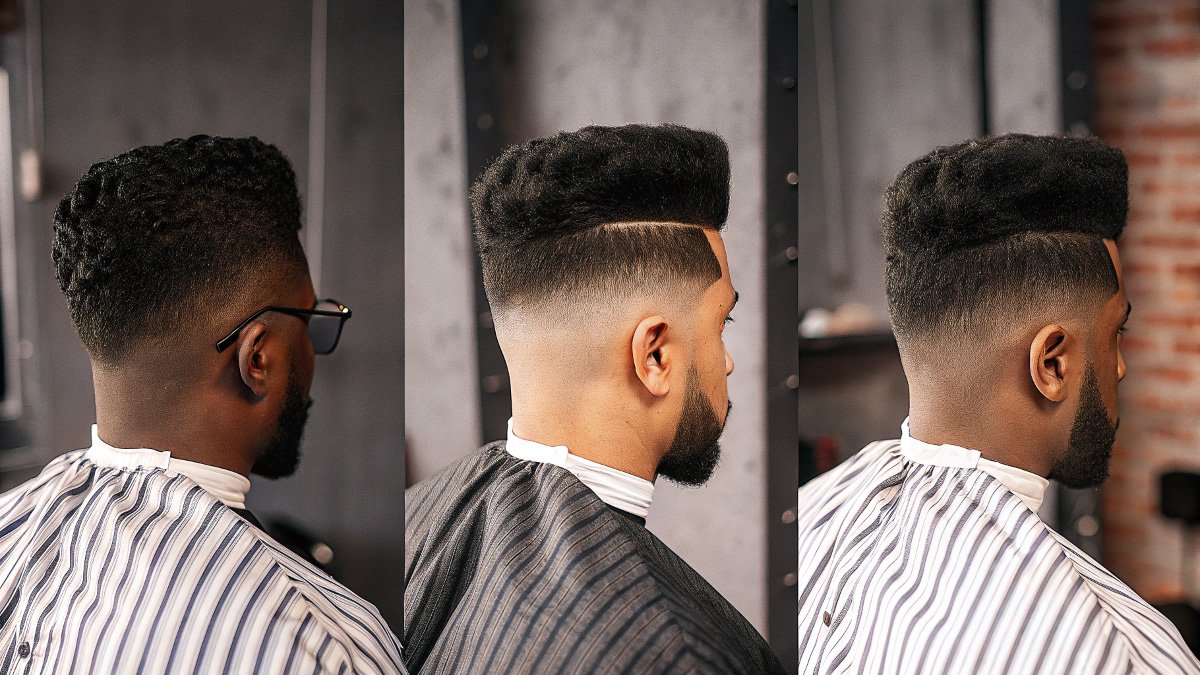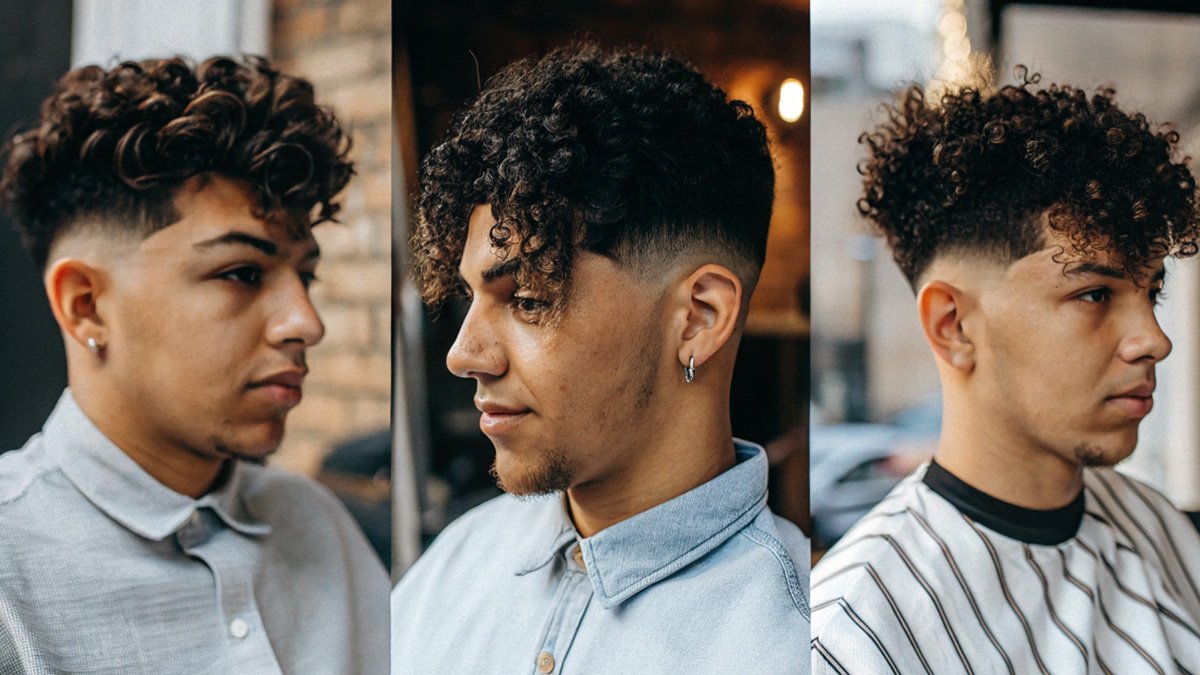Men seek fresh hairstyles that combine style with practicality. The French crop delivers both qualities in one clean cut. This haircut features short sides with longer hair on top, styled forward into a distinctive fringe. Barbers across the globe recommend this cut for its versatility and easy maintenance.
The French crop works with all hair types and face shapes. Straight hair creates clean lines, while curly hair adds natural texture. The cut suits professional environments and casual settings equally well. Most men can style their crop in under five minutes each morning.
This haircut gained popularity because it requires minimal daily styling. You wash your hair, apply a small amount of product, and push the front section forward. The result is a polished appearance that lasts throughout the day. Regular trims every three to four weeks maintain the shape and keep the style looking fresh.
What Makes the French Crop Special
The French crop differs from other short hairstyles through its forward-styled fringe and balanced proportions. The top section measures one to three inches in length, depending on your preference. Sides are cut shorter using clippers or scissors, creating contrast with the longer crown area.
Professional barbers cut the fringe straight across or with slight texture. This creates the signature look that sets the French crop apart from similar styles. The back and sides can be faded or tapered, allowing for personal customization based on your lifestyle and workplace requirements.
Hair texture influences how the crop appears when finished. Fine hair benefits from textured cutting techniques that add volume. Thick hair works well with thinning methods that reduce bulk while maintaining shape. Your barber will adjust their approach based on your specific hair characteristics.
15 Essential French Crop Variations
1. Traditional French Crop
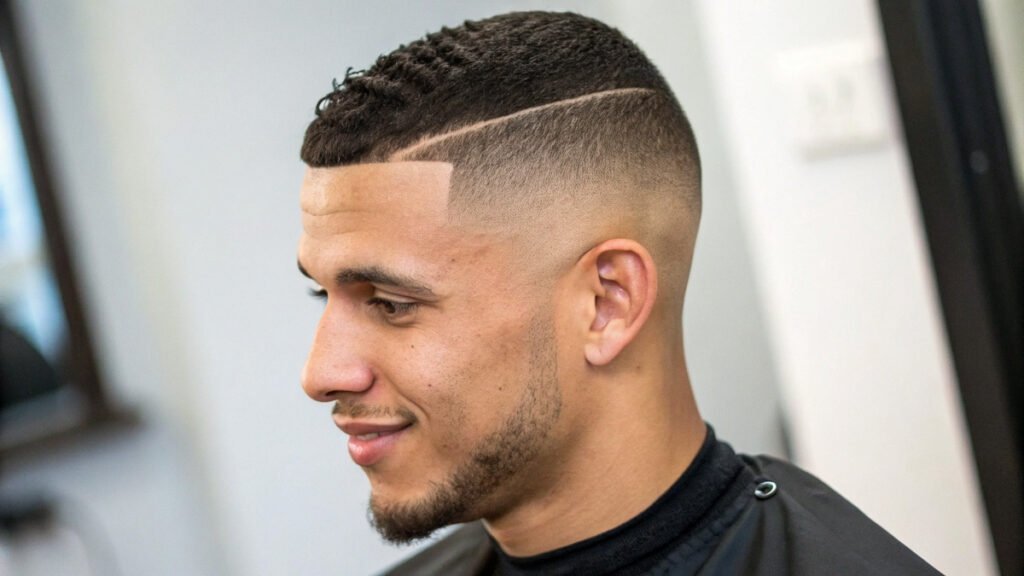
The traditional version maintains classic proportions with a straight fringe and evenly trimmed sides. This style works for men who prefer timeless appearance over trendy modifications. The top length stays between one and two inches, creating a balanced silhouette.
Styling involves applying light pomade to damp hair and combing the fringe forward. The sides require no product, making this an extremely low-maintenance option. This variation suits conservative work environments and formal occasions.
2. Textured Crown Crop
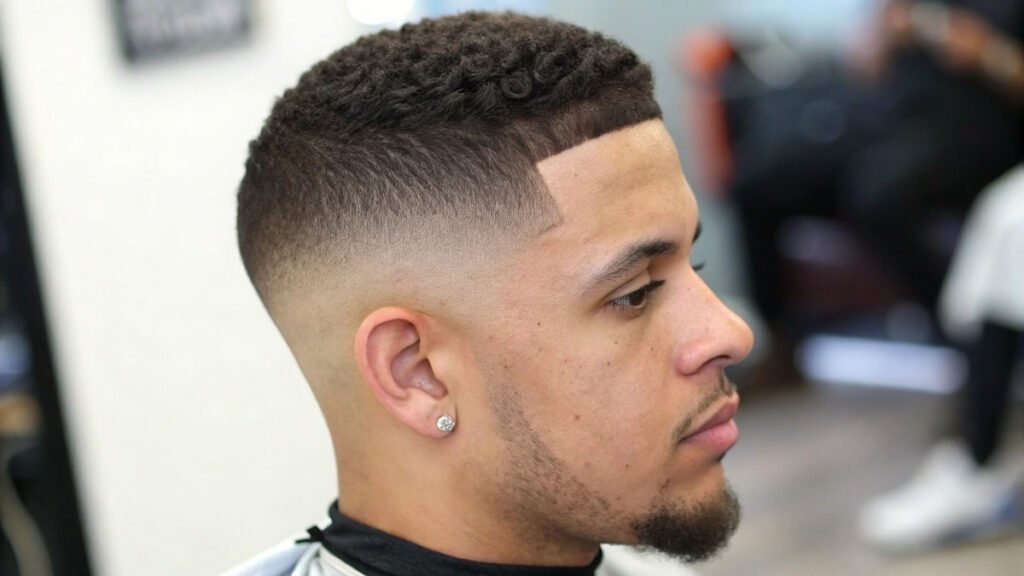
Textured cutting adds movement and dimension to the basic French crop. Barbers use point-cutting methods to create uneven lengths that enhance natural hair movement. This technique works especially well for men with thick or coarse hair.
The textured crown requires sea salt spray or matte paste for optimal styling. Apply product to towel-dried hair and scrunch gently to encourage natural texture. This version offers a more relaxed appearance while maintaining professional polish.
3. High Fade Crop
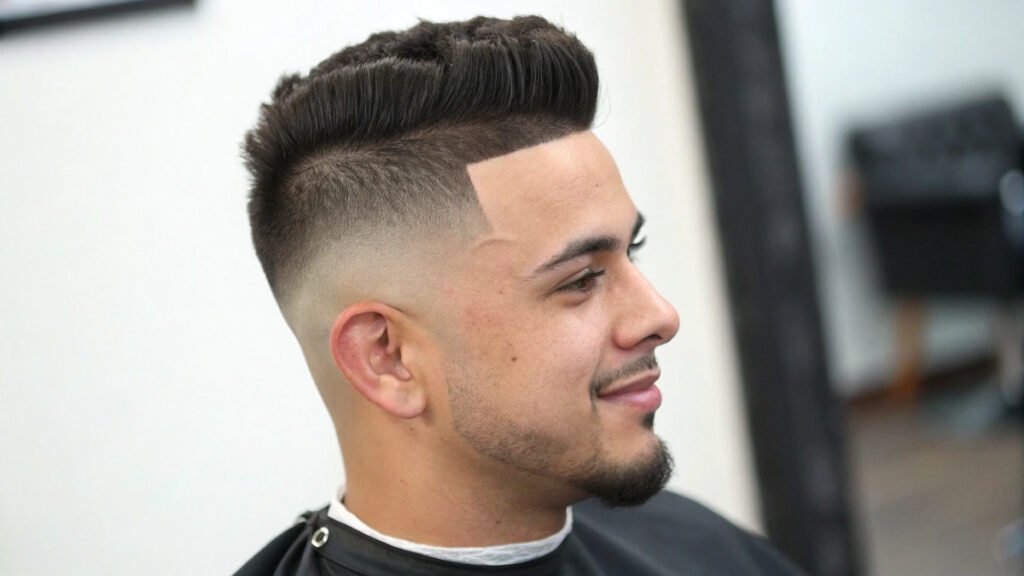
High fades create dramatic contrast between the long top and closely shaved sides. The fade begins at temple level and blends into the longer crown hair. This modern interpretation adds edge to the classic French crop silhouette.
Maintenance requires visits to your barber every two weeks to keep the fade crisp. Use strong-hold pomade on the top section to maintain control throughout busy days. This style particularly suits men with angular facial features.
4. Mid Fade Variation
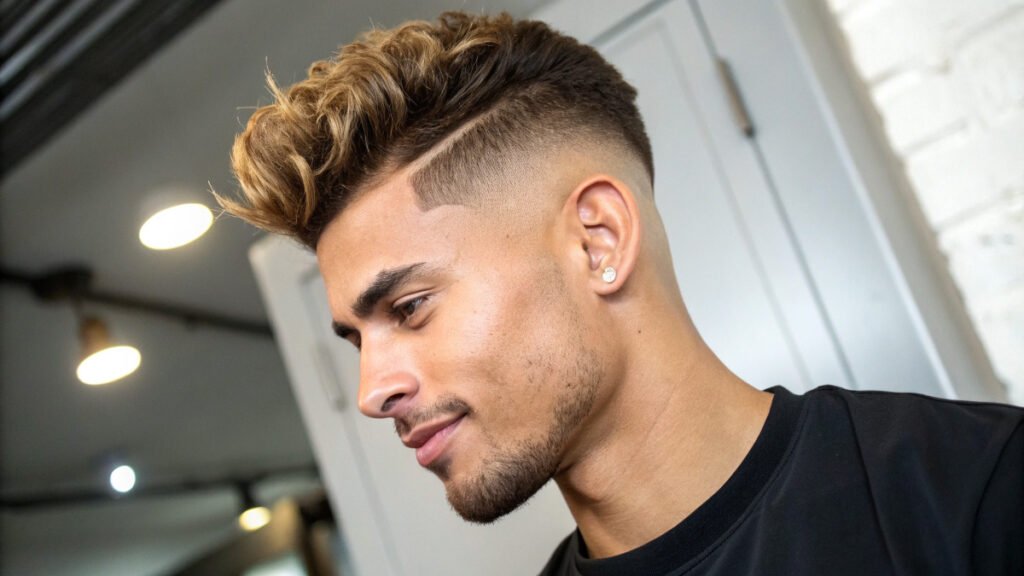
Mid fades offer a balanced approach between subtle and dramatic styling. The fade starts at ear level and gradually blends upward. This creates a professional appearance suitable for most workplace environments.
Styling time remains minimal with this variation. Apply light gel to the crown and comb forward for a polished finish. The mid fade works well with all face shapes and hair textures.
5. Low Fade French Crop
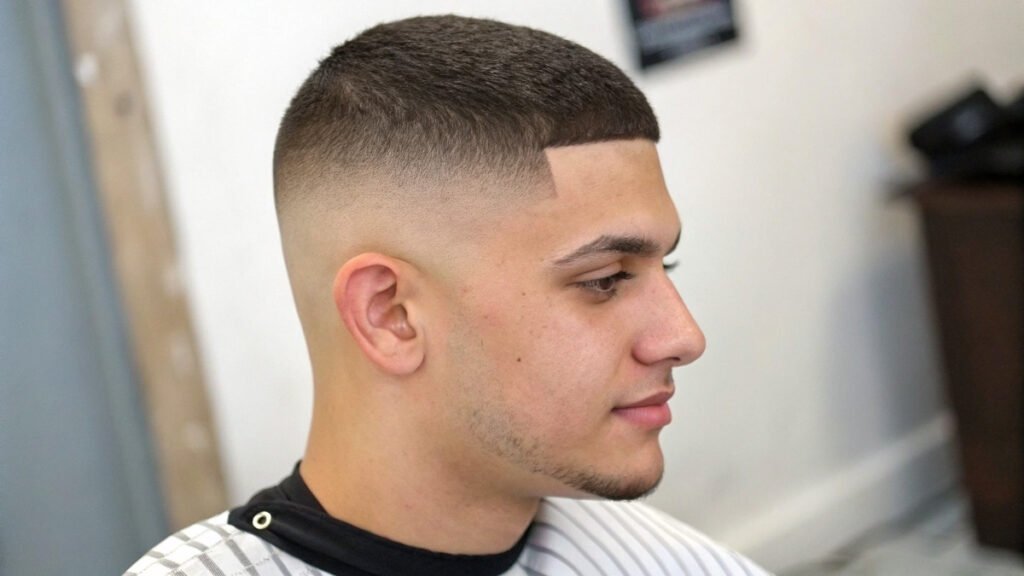
Low fades provide the most conservative interpretation of faded French crops. The transition begins below the ears and creates subtle contrast with the top section. This option suits men who want modern styling without dramatic changes.
Daily styling involves minimal product application and forward combing. The low fade grows out gracefully, extending time between barber appointments. This makes it an economical choice for budget-conscious men.
6. Disconnected Style
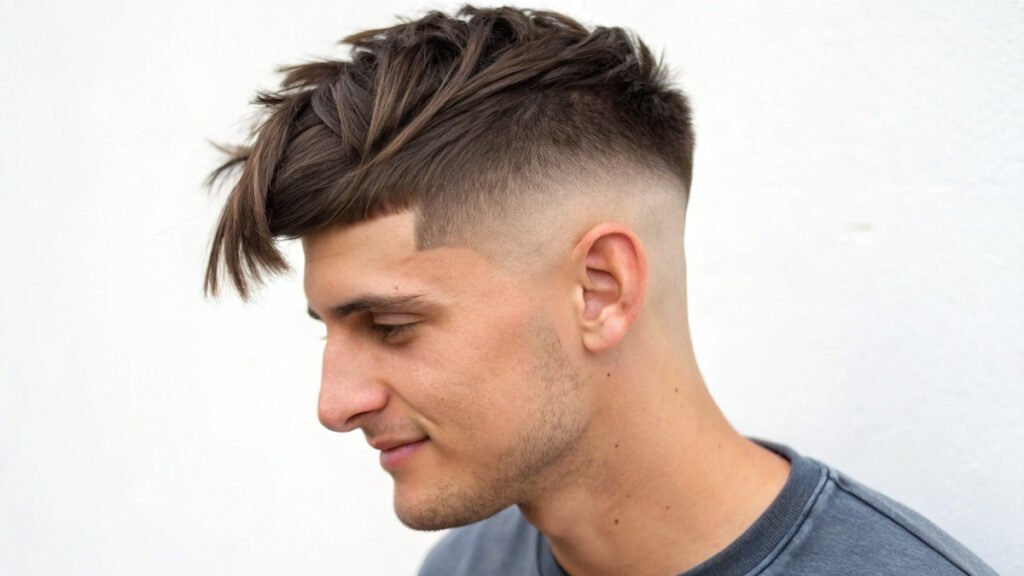
Disconnected crops feature an abrupt transition between long and short sections without gradual blending. This creates a bold, modern appearance that makes a strong style statement. The contrast emphasizes the textured top portion.
This variation requires confidence to wear successfully. Style with matte clay to enhance texture and separation between the different lengths. Regular maintenance keeps the disconnect sharp and visually appealing.
7. Curly French Crop
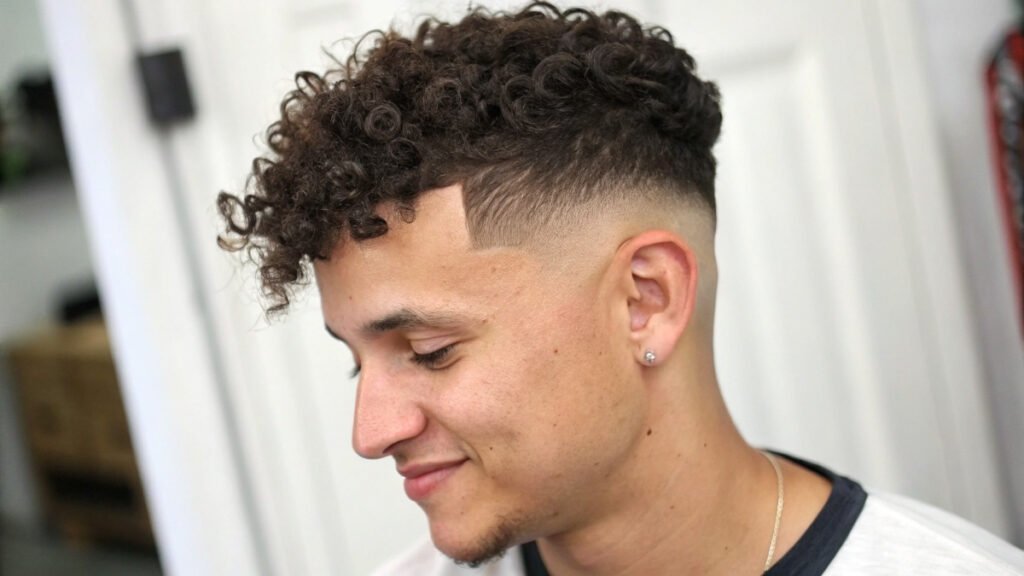
Natural curls transform the French crop into a unique, eye-catching style. The curly texture adds volume and movement that straight hair cannot achieve. Barbers adjust their cutting technique to work with curl patterns rather than against them.
Curl-defining cream enhances natural texture without weighing down the hair. Apply to wet hair and scrunch gently before air-drying. This method preserves curl formation while reducing frizz and flyaways.
8. Extended Length Version
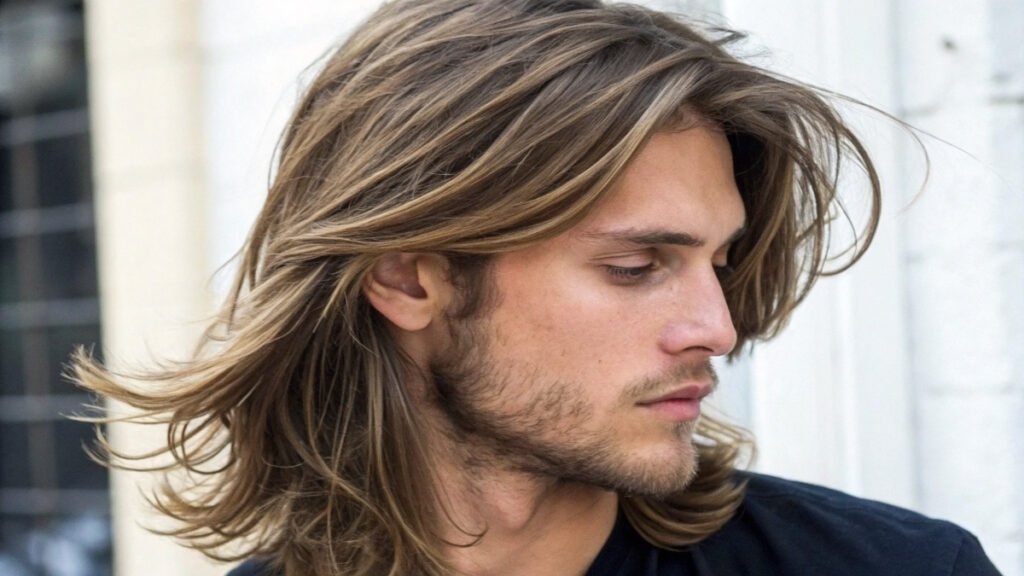
Extended crops feature longer top sections that reach three to four inches in length. This provides more styling versatility while maintaining the characteristic forward fringe. The extra length allows for side-swept or slicked-back alternatives.
Multiple styling options make this variation particularly appealing. Create volume with blow-drying techniques or smooth down with pomade for sleeker finishes. The extended length suits men transitioning from longer hairstyles.
9. Asymmetrical Crop
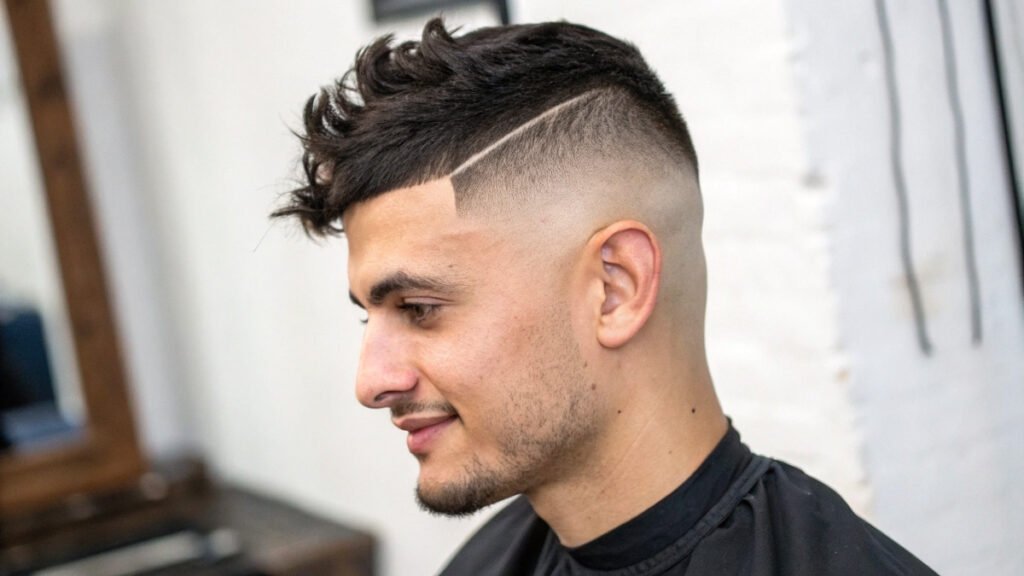
Asymmetrical cuts introduce intentional imbalance to create visual interest. One side features longer hair than the other, breaking traditional symmetry. This modern interpretation appeals to fashion-forward men seeking distinctive styling.
Professional barbers customize the asymmetry to complement individual facial features. The result is a personalized look that stands out from standard crop variations. Maintenance requires skilled cutting to preserve the intended proportions.
10. Layered Fringe Crop
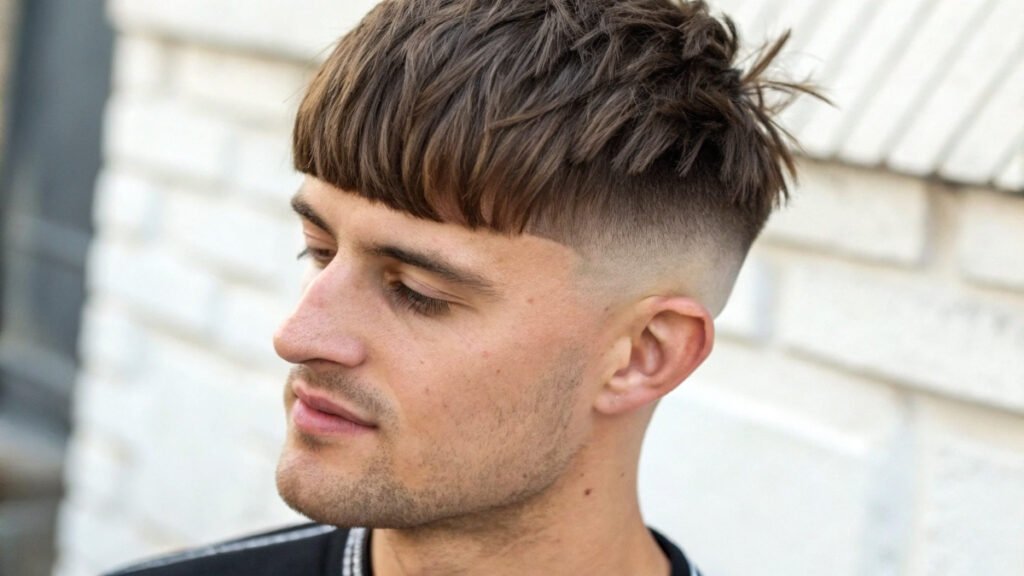
Layered cutting techniques create depth and movement within the fringe area. Multiple lengths blend together for a softer, more natural appearance. This approach works particularly well with wavy or thick hair textures.
Lightweight styling products enhance the layered effect without creating heaviness. Mousse or texturizing spray adds volume while maintaining flexibility. The layered fringe grows out gracefully between appointments.
11. Pompadour Fusion
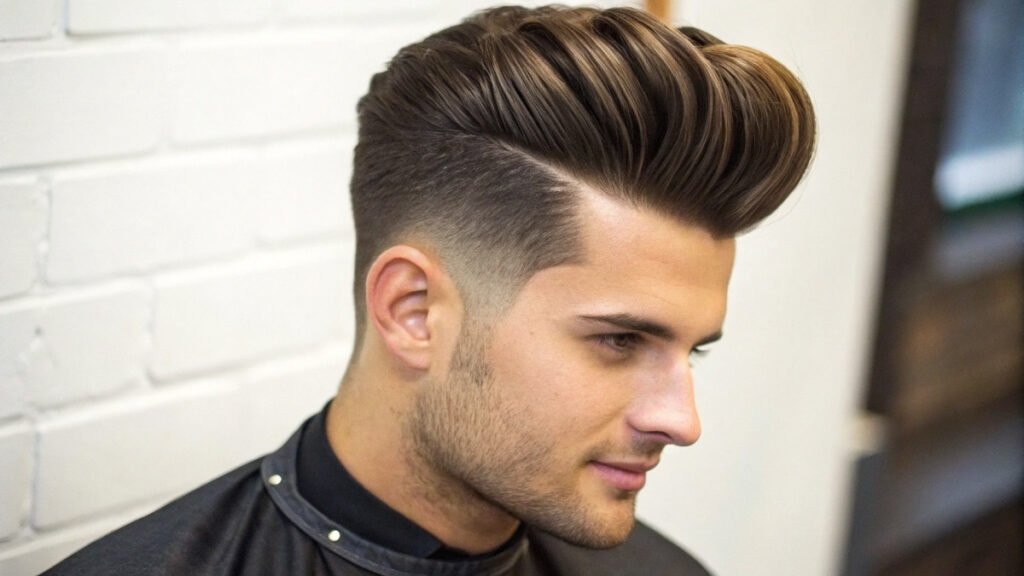
This hybrid style combines French crop structure with pompadour height and volume. The result is a sophisticated look that offers the best elements of both classic hairstyles. The fringe sweeps upward rather than forward.
Styling requires blow-drying skills and strong-hold products. Use a round brush to create volume while directing hair upward and back. This variation suits special occasions and men who enjoy detailed grooming routines.
12. Undercut Integration
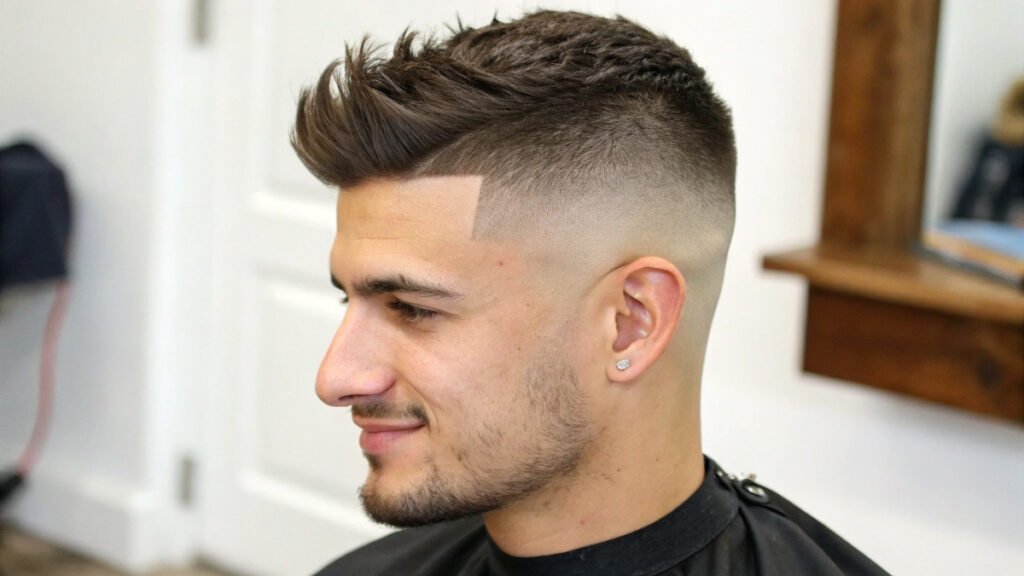
Undercuts feature dramatically short sides that create stark contrast with the longer top. The transition is abrupt rather than gradual, emphasizing the textured crown area. This bold interpretation appeals to younger men and creative professionals.
Maintenance involves regular touch-ups to keep the undercut clean. Home trimming between appointments helps maintain the dramatic contrast. Style the top with strong-hold products to emphasize the length difference.
13. Skin Fade Crop
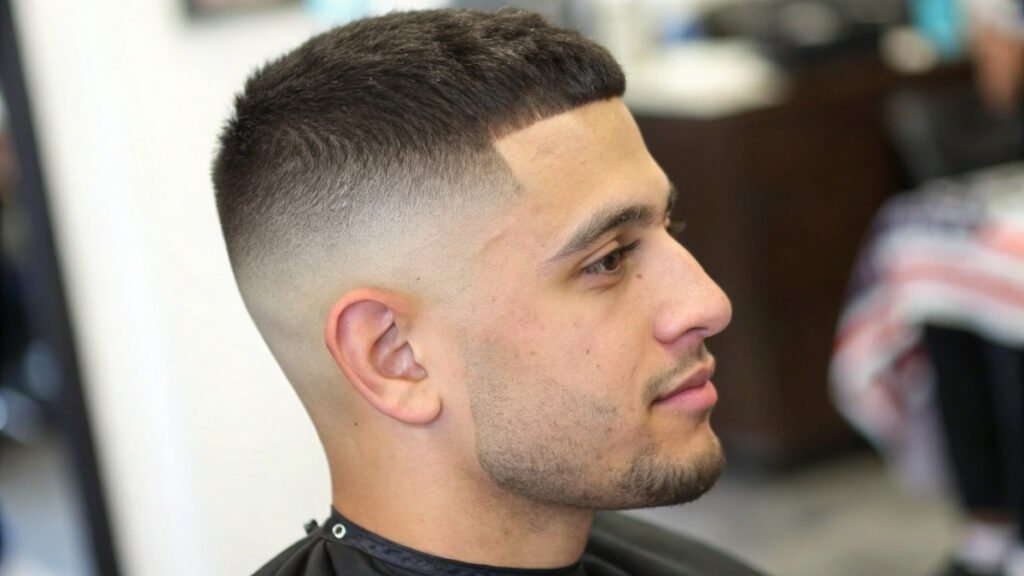
Skin fades take the sides down to the scalp level, creating maximum contrast with the top section. This dramatic approach requires skilled barber work to achieve smooth transitions. The result is a sharp, modern appearance.
Daily styling focuses entirely on the top section since the sides require no product. Strong-hold gel or pomade keeps the fringe in place throughout active days. This variation demands frequent maintenance visits.
14. Taper Cut Version
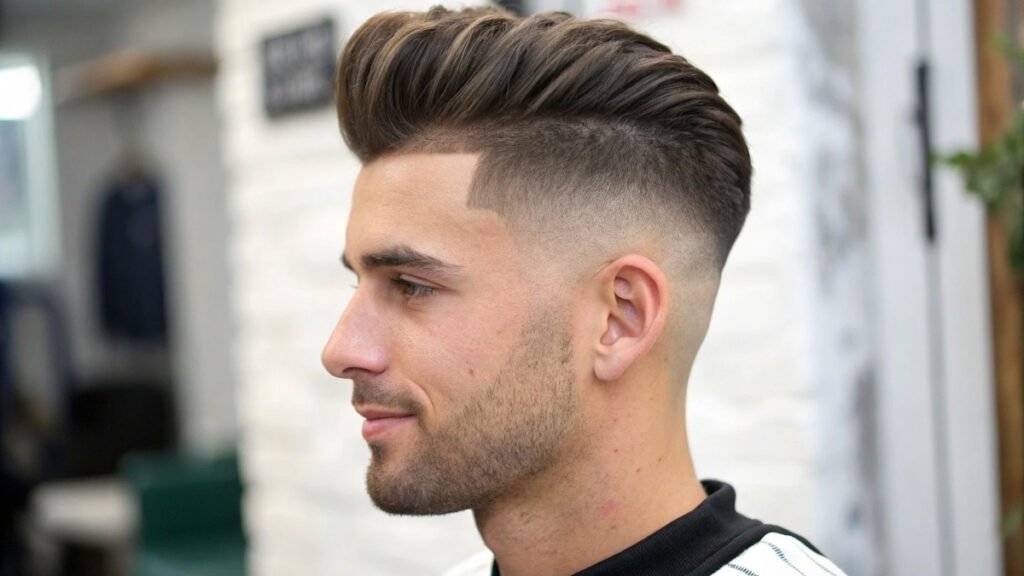
Tapered sides offer a gentler alternative to dramatic fades. The length gradually decreases from top to bottom without reaching skin level. This creates a professional appearance suitable for conservative environments.
The taper cut requires less frequent maintenance than fade variations. Styling remains simple with basic products and forward combing techniques. This makes it an excellent choice for busy professionals.
15. Color-Enhanced Crop
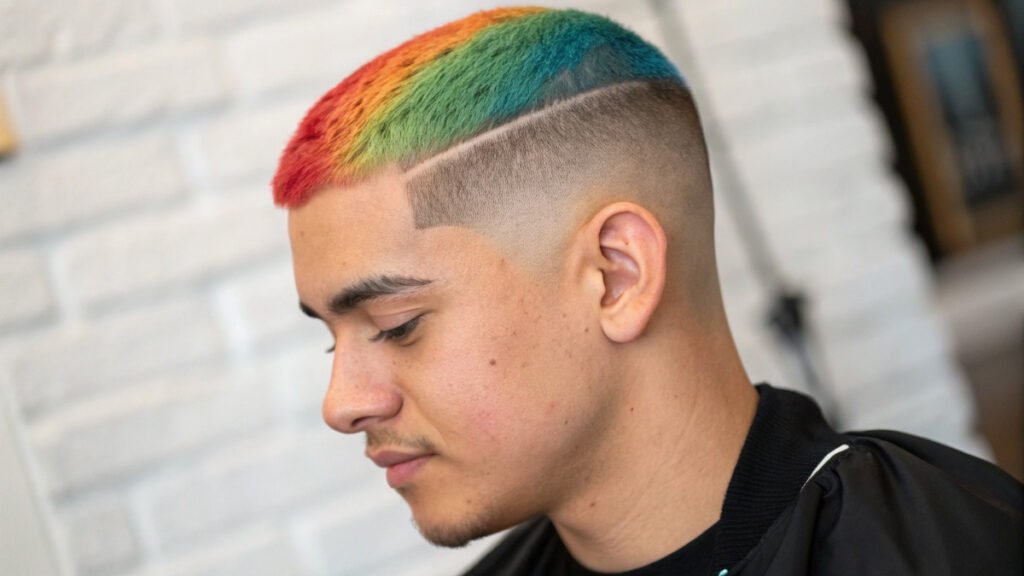
Modern coloring techniques add dimension and personality to French crops. Subtle highlights or bold color statements transform the basic cut into something unique. Color placement can emphasize texture and movement.
Professional colorists recommend colors that complement your natural tone and skin color. Maintenance involves color-safe products and regular touch-ups. This variation allows for creative expression within a classic framework.
Styling Products and Techniques
Product selection significantly impacts your French crop’s final appearance. Matte pastes create textured, natural-looking finishes perfect for casual settings. Pomades provide sleek, polished results suitable for formal occasions.
Sea salt sprays enhance natural texture and add subtle volume. These work particularly well with wavy or curly hair types. Light-hold gels offer control without stiffness, making them ideal for everyday styling.
Application technique matters as much as product choice. Warm styling products between your palms before applying to ensure even distribution. Start with small amounts and add more if needed to avoid overstyling.
Hair Type Considerations
Straight hair offers the most styling flexibility with French crops. It accepts both sleek and textured finishes equally well. Straight hair also holds styles longer and requires less product for control.
Wavy hair adds natural movement and texture to crop styles. The waves enhance the casual, effortless appearance that many men seek. Light products work best to avoid weighing down the natural wave pattern.
Curly hair creates unique French crop interpretations that stand out from traditional versions. The curls add volume and character that cannot be achieved with other hair types. Curl-specific products maintain definition while controlling frizz.
Face Shape Compatibility
Round faces benefit from angular French crop variations that add definition. High fades and textured tops create vertical lines that elongate the appearance. Avoid blunt fringes that emphasize width.
Square faces work well with softer, textured crop styles that balance strong jawlines. Layered fringes and subtle fades complement angular features without competing with them. Side-swept variations also flatter square face shapes.
Oval faces suit virtually all French crop variations. This versatile face shape provides an ideal canvas for experimenting with different cuts and styling approaches. Both conservative and bold interpretations work equally well.
Long faces benefit from wider fringes and fuller side sections. These elements add width and balance to elongated features. Avoid high fades that might emphasize length further.
Professional Styling Tips
Start with clean, towel-dried hair for optimal styling results. Damp hair accepts products better and styles more easily than completely dry hair. Avoid oversaturating with water, which can dilute product effectiveness.
Use minimal amounts of styling products initially. You can always add more, but removing excess product requires rewashing. Most men need only a pea-sized amount for their entire French crop.
Pay attention to fringe placement during styling. The forward direction defines the French crop’s characteristic appearance. Use fingers or a comb to direct hair into the desired position while products are still workable.
Maintenance Requirements
Regular barber visits maintain your French crop’s intended shape and proportions. Classic versions need trimming every four to six weeks. Fade variations require more frequent appointments, typically every two to three weeks.
Home maintenance between appointments involves basic care routines. Wash with quality shampoo and condition regularly to keep hair healthy. Use heat protection products when blow-drying to prevent damage.
Seasonal adjustments help maintain style effectiveness year-round. Summer humidity may require stronger-hold products, while winter static calls for moisturizing treatments. Adapt your routine to environmental conditions.
Common Styling Mistakes
Overusing styling products creates heavy, unnatural-looking results. The French crop should appear effortless, not obviously styled. Start with less product than you think you need.
Ignoring natural hair growth patterns leads to styling frustration. Work with your cowlicks and natural direction rather than fighting against them. Your barber can cut the style to complement your unique growth patterns.
Skipping regular maintenance appointments allows the cut to lose its intended shape. French crops depend on precise proportions for their effectiveness. Schedule your next appointment before leaving the barbershop.
Budget Considerations
French crops offer excellent value compared to high-maintenance hairstyles. The simple cut requires fewer products and less time for daily styling. Basic variations need trimming only every four to six weeks.
Professional cutting is worth the investment for optimal results. Skilled barbers understand how to adapt the cut to your specific features and hair type. This personalization ensures the best possible outcome.
Quality styling products last longer and perform better than budget alternatives. Invest in one or two excellent products rather than multiple mediocre options. Professional recommendations help identify the most suitable choices.
Conclusion
The French crop combines timeless appeal with modern versatility. Its clean lines and forward fringe create a distinctive appearance that works in professional and casual settings. The cut adapts to different hair types and face shapes while maintaining its essential character.
Choose your French crop variation based on personal style preferences, lifestyle requirements, and maintenance capabilities. Conservative versions suit traditional environments, while bold interpretations make fashion statements. All variations share the benefit of relatively simple daily styling.
Regular maintenance and quality products ensure your French crop looks its best throughout its growth cycle. Work with a skilled barber who understands the cut’s nuances and can adapt it to your specific needs. With proper care, your French crop will provide months of effortless style.
